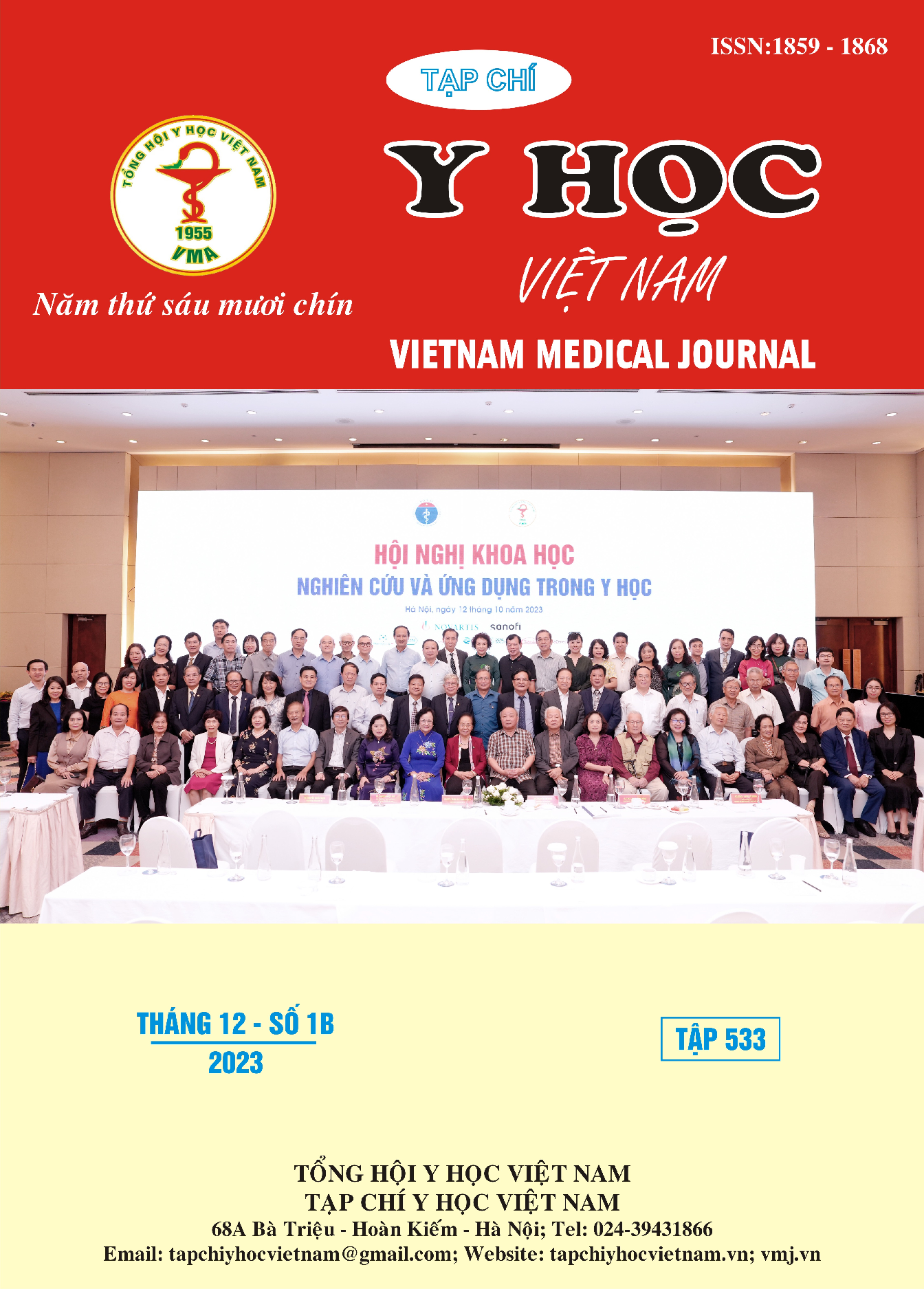KẾT QUẢ CẮT KHỐI TÁ TỤY NẠO VÉT HẠCH MỞ RỘNG ĐIỀU TRỊ UNG THƯ VÙNG ĐẦU TỤY
Nội dung chính của bài viết
Tóm tắt
Mục tiêu: Đánh giá kết quả sớm của nạo vét hạch mở rộng trong phẫu thuật cắt khối tá tụy điều trị các bệnh lý ung thư vùng đầu tụy. Đối tượng và phương pháp: Nghiên cứu mô tả hồi cứu kết hợp tiến cứu các trường hợp được được phẫu thuật cắt khối tá tràng đầu tụy, vét hạch mở rộng cho các bệnh lý ung thư vùng đầu tụy tại Bệnh viện Việt Đức và Bệnh viện K trong thời gian từ 07/2009 – 07/2018. Kết quả: Phẫu thuật đã được thực hiện cho 24 bệnh nhân (BN). Tỉ lệ nam/nữ: 1/1,67. Tuổi trung bình: 53,4 ± 15,1 tuổi. Giải phẫu bệnh sau mổ: ung thư biểu mô tuyến bóng Vater (66,67%), ung thư biểu mô tuyến tụy (16,67%), u đặc giả nhú (12,5%), ung thư biểu mô tuyến của phần thấp ống mật chủ (4,16%). 1 BN có di căn nhóm hạch quanh động mạch gan chung (nhóm 8), chiếm 4,16%. Thời gian nằm hồi sức sau mổ: 4,2 ± 2,0 ngày. Biến chứng thường gặp: rò tụy (12,5%), áp xe tồn dư (8,3%). Thời gian nằm viện trung bình: 26,1 ± 12,0 ngày. Kết luận: Cắt khối tá tụy nạo vét hạch mở rộng trong điều trị ung thư vùng đầu tụy là phương pháp có tính khả thi, tuy nhiên phải được thực hiện bởi các phẫu thuật viên chuyên khoa có nhiều kinh nghiệm. Cần có thời gian dài để đánh giá thời gian sống thêm.
Chi tiết bài viết
Tài liệu tham khảo
2. Capussotti L, Massucco P, Ribero D, et al (2003), "Extended lymphadenectomy and vein resection for pancreatic head cancer: outcomes and implications for therapy", Archives of surgery, 138 (12), pp. 1316-1322.
3. Dellaportas D, Arkadopoulos N, Lykoudis P M, et al (2017), "Extended Lymph Node Dissection in Pancreaticoduodenenctomy? A Case-control Study", JOP J Pancreas (Online), 18 (1), pp. 49-53.
4. Gockel I, Domeyer M, Wolloscheck T, et al (2007), "Resection of the mesopancreas (RMP): a new surgical classification of a known anatomical space", World journal of surgical oncology, 5 (1), pp. 1-8.
5. Kayahara M, Nagakawa T, Kobayashi H, et al (1992), "Lymphatic flow in carcinoma of the head of the pancreas", Cancer, 70 (8), pp. 2061-2066.
6. Kim D H, Choi S H, Choi D W, et al (2017), "Division of surgeon workload in pancreaticoduodenectomy: striving to decrease post‐operative pancreatic fistula", ANZ Journal of Surgery, 87 (7-8), pp. 569-575.
7. Michalski C, Kleeff J, Wente M, et al (2007), "Systematic review and meta-analysis of standard and extended lymphadenectomy in pancreaticoduodenectomy for pancreatic cancer", Journal of British Surgery, 94 (3), pp. 265-273.
8. Pedrazzoli S, DiCarlo V, Dionigi R, et al (1998), "Standard versus extended lymphadenectomy associated with pancreatoduodenectomy in the surgical treatment of adenocarcinoma of the head of the pancreas: a multicenter, prospective, randomized study. Lymphadenectomy Study Group", Annals of surgery, 228 (4), pp. 508.
9. Tol J A, Gouma D J, Bassi C, et al (2014), "Definition of a standard lymphadenectomy in surgery for pancreatic ductal adenocarcinoma: a consensus statement by the International Study Group on Pancreatic Surgery (ISGPS)", Surgery, 156 (3), pp. 591-600.
10. Wang J, Ma R, Churilov L, et al (2018), "The cost of perioperative complications following pancreaticoduodenectomy: A systematic review", Pancreatology, 18 (2), pp. 208-220.


